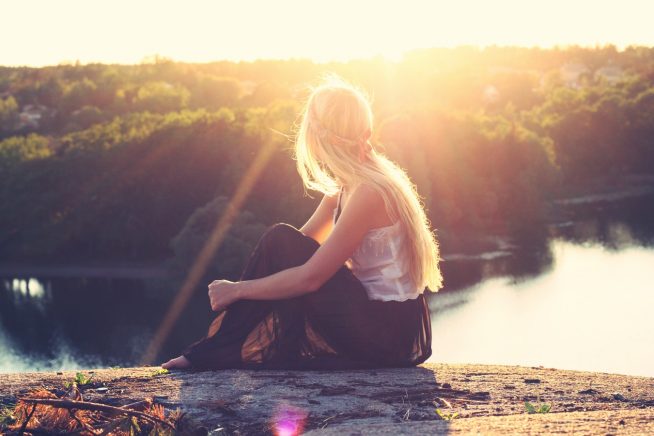Not long ago, I asked my family, friends and colleagues this question. Their responses were alarming: Not one person said they felt hopeful and many spoke about their fears, sadness, anger and guilt about the state of the world. Having worked on environmental and social issues for almost 40 years, I am very familiar with these emotions, but I was shocked by how common they were among the people I know.
This utterly unscientific survey was part of a personal inquiry into hope that I started back in 2011. One day, when I was feeling upset about the Fukushima disaster in Japan, I asked myself:
How can we be hopeful when the world seems to be falling apart?
Extrinsic Hope
To find an answer, I looked in the dictionary. Most define hope using words such as expectation, anticipation and desire. It seems to me these definitions are based on hoping for specific things that we think will make us happier. I call this extrinsic hope because it is based on wanting improvements in the external circumstances of our lives.
For instance, I could say “I hope to win the lottery” or “I hope to see an end to climate change”. With both of these extrinsic hopes, I want something better. In this way, extrinsic hopes are based on a sense of dissatisfaction with the present situation.
At this point, I want to be clear that there’s nothing wrong with extrinsic hope. It can help us cope with difficult situations and give us a goal to work towards. This explains why it is so common. Just think about it. Whenever we have an extrinsic hope, there is something to look forward to, an expectation that gives us pleasure.
But life doesn’t always give us what we want. So extrinsic hopes are often accompanied by disappointment, sadness, anger and other unpleasant emotions. These feelings are indicators of unmet expectations and they often come up because we cannot control life.
The yawning gap between our hopes and the way life actually is is a set up for disappointment, sadness, anger and other unpleasant emotions.
When I realized this, I felt even more hopeless. So I went back to the dictionary and thankfully, I found another older and much less common definition of hope.
Intrinsic Hope
This secondary definition is based on trust. It has an unshakeable faith in whatever happens in life and in the human capacity to respond to it constructively. It is a positive, but not necessarily optimistic, attitude to life that does not depend on external circumstances or on expecting that life will get better any time soon. As Vaclav Havel said:
“Hope is a state of mind, not of the world”.
This type of hope does not depend on particular outcomes, so it is a hope IN something, rather than a hope FOR something.
I call it intrinsic hope because it comes from inside us. Intrinsic hope is not something we have to go out and get because we are all born with it. It’s sewn into our genes – just as it sewn into the genes of all life.

Courtesy of distelpics.
Intrinsic hope is the way a dandelion sprouts between the cracks in a downtown sidewalk, even though there’s no soil, and little sunlight or water. It’s the way a maple tree releases hundreds of thousands of seeds, oblivious of whether any will take root and grow. And it’s the way salmon strain to swim up their natal rivers and streams to spawn even though they will die in the effort.
One might say that intrinsic hope is life’s love for itself.
With intrinsic hope, we can accept everything – whether we like it or not – because we love life so much. In this way, intrinsic hope is about aspiration rather than expectation, possibility rather than anticipation.
Intrinsic hope is life’s love for itself. In this way, intrinsic hope is about aspiration rather than expectation, possibility rather than anticipation. @WhidbeyKate (Click to Tweet!)
Because intrinsic hope does not depend on particular results, it does not have a fixed view of the future. With intrinsic hope, we have one foot firmly planted in the present moment and the other reaching out into the uncertain and unknowable landscape of the future. Then we use our ingenuity to build a bridge between them.
Intrinsic hope says “YES!” to life and to working with our situation. Using the present as a springboard, we can launch ourselves into inventing a better future. As one of my colleagues says:
“The future is not inevitable; it is inventible.”
So by choosing intrinsic hope, we will be able to cope with anything – staying positive and engaged, even in the darkest of times.
Leave a comment and share: What does hope mean to you? How do you sustain your hope?
 Kate Davies is the author of Intrinsic Hope: Living Courageously in Troubled Times (2018). She is Senior Fellow at the Whidbey Institute and Professor Emerita at Antioch University. Ever hopeful, she lives on Whidbey Island in Washington state.
Kate Davies is the author of Intrinsic Hope: Living Courageously in Troubled Times (2018). She is Senior Fellow at the Whidbey Institute and Professor Emerita at Antioch University. Ever hopeful, she lives on Whidbey Island in Washington state.
Featured image courtesy of Julia Caesar.












